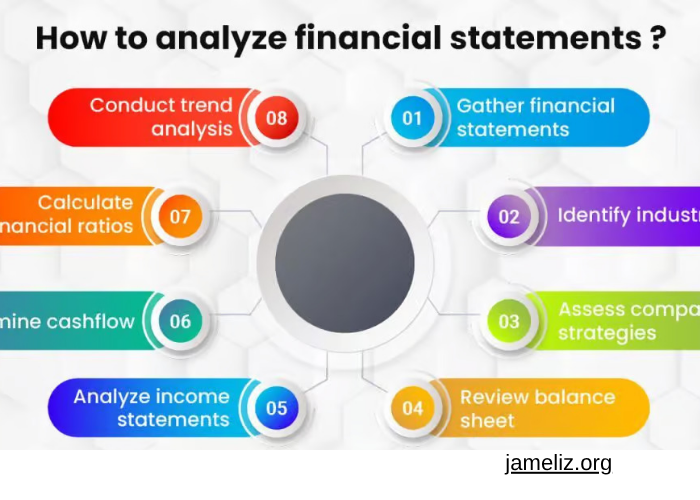For business owners, investors, and anyone interested in finance, understanding financial statements is essential. These documents provide a snapshot of a company’s financial health, performance, and cash flow. However, to many, financial statements can seem confusing or overwhelming. The good news is, with some basic knowledge, you can easily make sense of them and use the information to make informed decisions.
This article will guide you through the essentials of financial statements with norraco transact and help you decode what those numbers really mean.
What Are Financial Statements?
Financial statements are formal records that summarize a company’s financial activities over a specific period. The three key financial statements are:
- Balance Sheet
- Income Statement (Profit & Loss Statement)
- Cash Flow Statement
1. Understanding the Balance Sheet
The balance sheet shows what a company owns (assets), what it owes (liabilities), and the owner’s equity at a specific point in time.
- Assets: These include cash, accounts receivable, inventory, equipment, and property.
- Liabilities: Debts the company must pay, such as loans, accounts payable, and mortgages.
- Equity: The owner’s claim on the business after liabilities are deducted from assets.
2. Decoding the Income Statement
Also called the Profit and Loss (P&L) statement, the income statement summarizes revenues, expenses, and profits over a period (monthly, quarterly, or yearly).
- Revenue: Total sales or income from business operations.
- Cost of Goods Sold (COGS): Direct costs related to producing goods or services.
- Gross Profit: Revenue minus COGS.
- Operating Expenses: Costs like salaries, rent, utilities, and marketing.
- Net Income: Profit after subtracting all expenses and taxes.
Why it matters: The income statement shows whether a company is profitable and how efficiently it manages expenses. Investors and managers use it to evaluate growth trends and profitability margins.
3. Interpreting the Cash Flow Statement
The cash flow statement tracks the inflow and outflow of cash over a period and is divided into three sections:
- Operating Activities: Cash generated or used in core business operations.
- Investing Activities: Cash spent on or received from buying/selling assets like equipment or investments.
- Financing Activities: Cash from or to investors and creditors, including loans, dividends, or stock issuance.
Why it matters: Even profitable companies can fail if they don’t manage cash flow well. The cash flow statement reveals if a business generates enough cash to sustain operations, invest, and pay debts.
How to Analyze Financial Statements
1. Look Beyond the Numbers
Numbers on financial statements tell a story but need context. Compare statements over multiple periods to identify trends, seasonal changes, or growth patterns.
2. Use Financial Ratios
Ratios simplify complex data and help benchmark performance. Some common ratios include:
- Current Ratio: Current assets ÷ current liabilities (measures liquidity)
- Debt-to-Equity Ratio: Total liabilities ÷ shareholder equity (measures financial leverage)
- Gross Profit Margin: Gross profit ÷ revenue (measures profitability)
- Return on Equity (ROE): Net income ÷ equity (measures return on investment)
Ratios vary by industry, so compare with peers for better insight.
3. Pay Attention to Notes and Disclosures
Financial statements come with notes explaining accounting methods, risks, and contingencies. Reading these notes is crucial to understand unusual transactions or potential liabilities to rare toon india.
4. Watch for Red Flags
- Declining cash flow despite profits
- Increasing debt levels without clear repayment plans
- Shrinking profit margins
- Large discrepancies between net income and operating cash flow
These may indicate financial stress or accounting issues.
Practical Tips for Small Business Owners and Investors
- Regularly review financial statements: Monthly or quarterly reviews can catch issues early.
- Leverage accounting software: Tools like QuickBooks or Xero can generate easy-to-understand reports.
- Seek professional advice: Accountants or financial advisors can help interpret complex data.
- Focus on key metrics: Don’t get lost in details; focus on profitability, liquidity, and cash flow.
- Use statements for decision-making: Whether planning budgets, seeking loans, or attracting investors, accurate financial analysis is vital.
Final Thoughts
Financial statements may seem intimidating at first, but with practice, they become powerful tools for understanding your business’s health. By learning how to read and analyze the balance sheet, income statement, and cash flow statement, you can make smarter financial decisions, identify opportunities for growth, and avoid pitfalls.
Whether you’re an entrepreneur, investor, or student, mastering financial statements is a valuable skill that opens doors to better financial management and business success.

